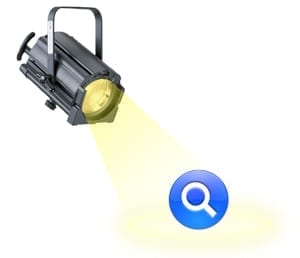 Sometimes, when I feel the urge to tinker, I poke around the various “resource bundles” of applications on my Mac. Its not always a smart thing to do (which is why I always work on a copy) and very often, there’s not much interesting in there besides some icons and a couple of code fragments that aren’t very interesting.
Sometimes, when I feel the urge to tinker, I poke around the various “resource bundles” of applications on my Mac. Its not always a smart thing to do (which is why I always work on a copy) and very often, there’s not much interesting in there besides some icons and a couple of code fragments that aren’t very interesting.
Sometimes, though, you find something incredibly useful. While poking about in the latest version of Safari, I came across a document that lists out the various keyboard and mouse shortcuts.
If you have Safari 4 installed, you can view it by entering this URL into your address bar (or just right-click the link and open it in a new window…) – file:///Applications/Safari.app/Contents/Resources/Shortcuts.html
While most of these shortcuts are old hat for many Safari users, it was nice to have all the combinations listed out as a reference. I later found out that you can also access this page if you have enabled Safari’s Debug menu. This can be done by using any of a number of Free/Shareware Safari add-ons or by entering the following command in Terminal
defaults write com.apple.Safari IncludeInternalDebugMenu 1
(thanks to Mac OS X Hints for this tip.)
While the Debug menu may be useful for programmers and the like, there really isn’t too much that’s useful for the rest of us, outside a couple of amusing “party tricks” (ooh… transparent windows…) and the aforementioned shortcuts list.
What I find much more useful is the “Develop” menu. This is another menu that’s disabled by default. It’s easy enough to turn on, though.
- Go to the Preferences in Safari.
- Click on the Advanced tab.
- Check the box next to “Show Develop menu in menu bar.’
In this menu, you’ll find a bevy of tools that will prove useful from time to time.
If you have a page that’s refusing to load via Safari, you can choose to open it directly in another browser you have installed by using the “Open Page With” selection. Similarly, if there’s a site that “requires” a particular browser even though there’s nothing “browser-specific” about it (banking sites are notorious for this), you can change Safari’s “User Agent” string by selecting the “required” browser from the list.
One of the features I use frequently is the Web Inspector. This multi-tabbed interface allows you to check out the source code, images, scripts, Cascading Style Sheets, and other elements of a site. I’ve used it to troubleshoot pages I’ve put together, grab images I’d otherwise be unable to get, and see what causes a particular page to take so darn long to load.
There are a bunch of other selections, as well, including options to turn off images, CSS, JavaScript and a number of other items. My advice on those is to leave them alone unless you’re sure they’re what you need to turn off. You can find more information about this menu by looking up “Develop menu” in Safari Help.
Though it is doubtful that I will ever say that it is the only Web browser you will need, Safari 4 is a very capable one. Now, with just a couple of tweaks, it becomes even more flexible. While it may not have all the extensibility of Firefox, these options make it my primary browser both at work and at home.








Thaanks for the info!